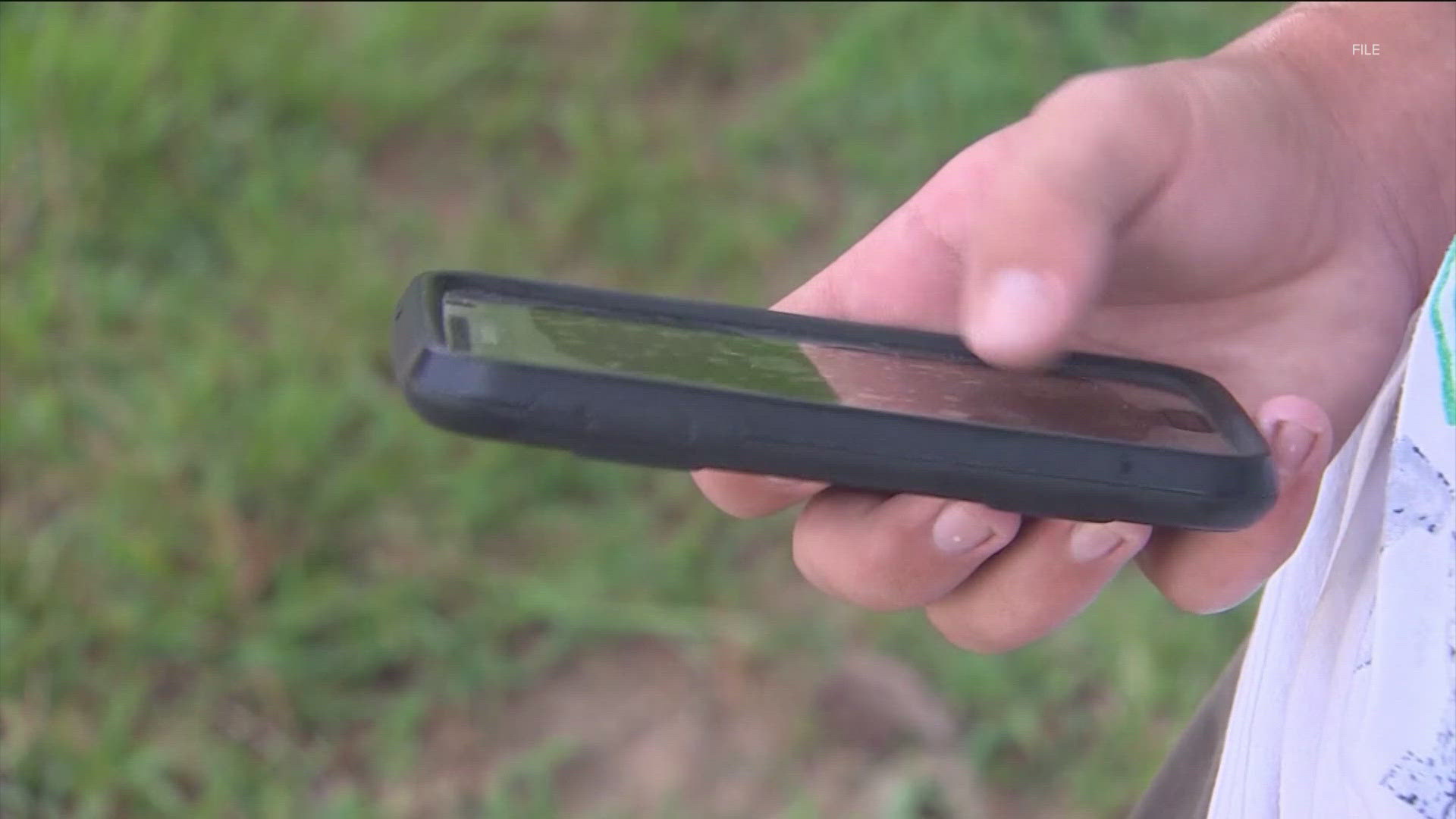AUSTIN, Texas — When Lake Travis parent Darby Pearson worked as a teacher, she saw how distracting cellphones could be in the classroom.
"Imagine, when we were kids if we went to school with like, miniature televisions in our pockets," Pearson said. "You're competing with texting friends and sending memes and, of course, kids with underdeveloped brains are going to be prone to wanting to play with those instead of learning."
These distractions are why Superintendent Paul Norton said the district has been having conversations about the impact of cellphones for a couple of years. Some of its biggest concerns revolved around cyberbullying and a lack of social interaction.
"Kids filming kids during the school day, whether it's in the cafeteria or in the hallway, and then taking that video and using it to make fun or belittle a peer, a co-student," Norton said. "When you go into a middle school cafeteria, you would see you know 60%, 70%, 80% of the kids on their cellphone instead of engaging with their peers."
Now, phones will need to be turned off and out of sight for pre-K through eighth grade students during the school day. If students break the rules, the consequences will range from their devices being taken away on the first and second offense to facing detention or in-school suspension for future offenses.
"We have to teach our kids that this is a social world. You have to communicate, you have to talk. That's how you do teamwork and partnerships. It's how you get a job one day," Norton said.
He said later, down the road, the district might consider extending the cellphone ban policy to high schoolers, too. Norton said high school teachers already have rules banning phones from their classrooms, but changes could come to the current policies.
"Part of high school is that you want to prepare kids for life after high school, too. Part of that is cellphone integrity and how you're supposed to use a device," Norton said. "I don't know if we'll completely take it away in high school, but there may be some tweaks we make to the policy."
Pearson looks at it as a way for students to make memories and connect offline.
"They should be able to go to school, learn, come back home and be safe – mentally, emotionally – and they should be learning at the same time. On so many levels, it's a good decision," Pearson said.
If parents need to contact their kids during the school day, the district said they can contact the school office.

